Abstract
The effect of contingent tangible and social reinforcement on academic performance was investigated in an experimental classroom of 25 selected underachieving students. Measures were taken of both teacher and child behavior during a baseline and two experimental treatment periods. During Treatment I, a point system with tangible backup reinforcers was combined with contingent social reinforcers dispensed by the teaching staff to assess the effects on three measures of academic performance (i.e., per cent of time at work, work output per minute, and accuracy). During Treatment II, the contingencies for the tangible reinforcers were terminated while social reinforcement was continued to see if the positive effects of Treatment I on academic performance would persist. The results show that with combined tangible and social reinforcers, students' work time, rate of output per hour, and accuracy in all activities substantially increased. After termination of the tangible reinforcers, the students maintained their high rates of output per hour and accuracy for the remaining period of the study while the total amount of time at work returned to the baseline level.
Full text
PDF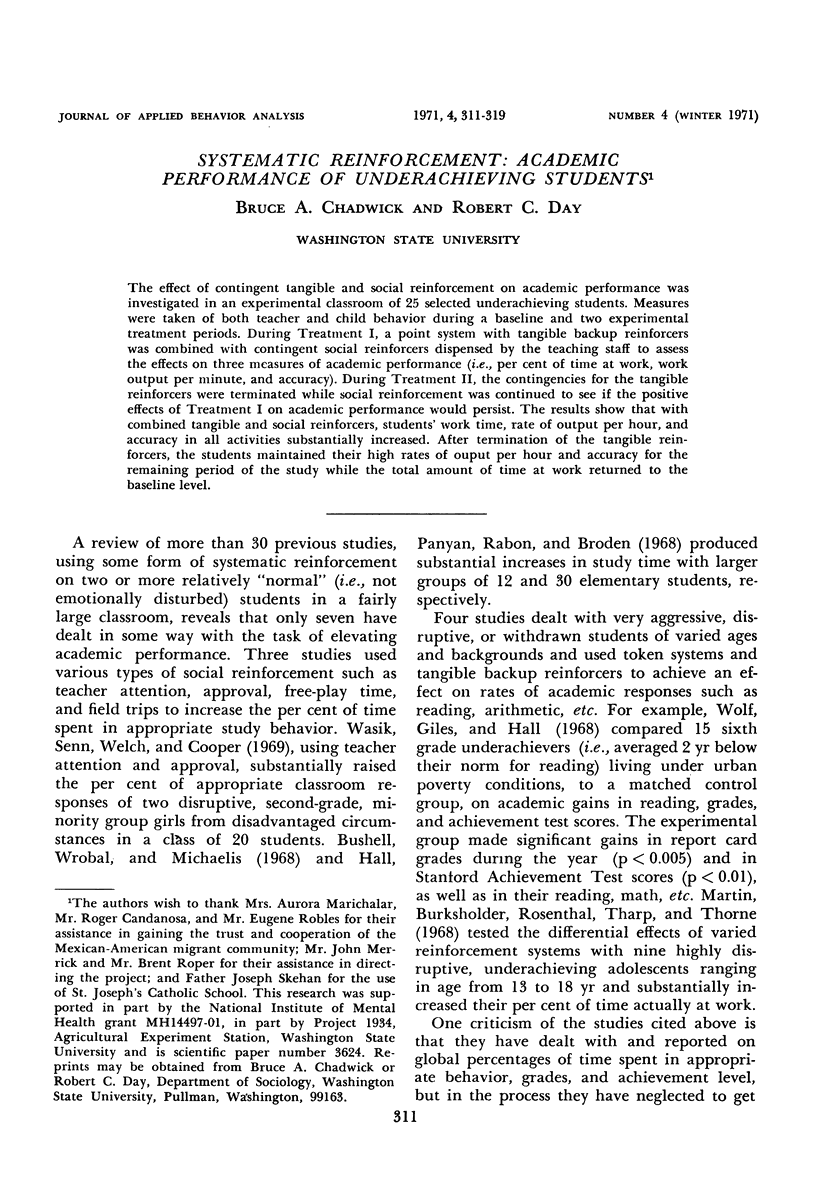
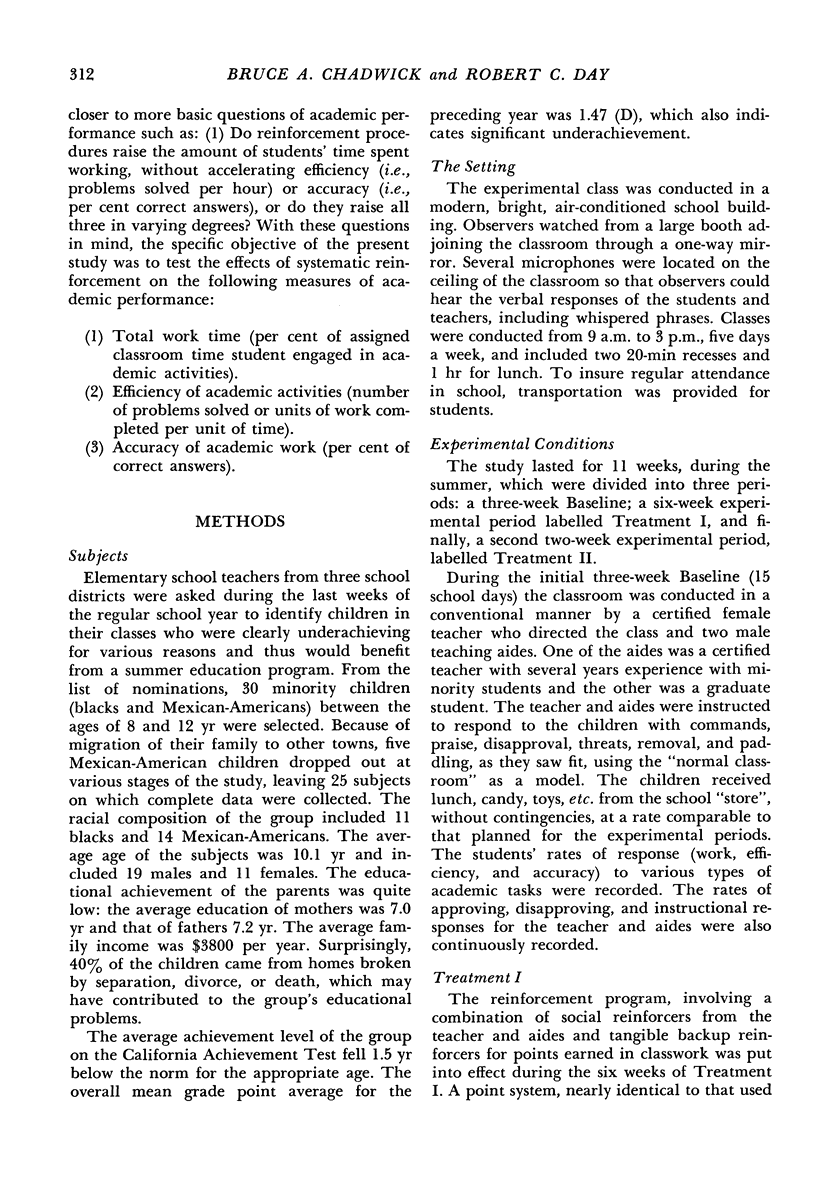
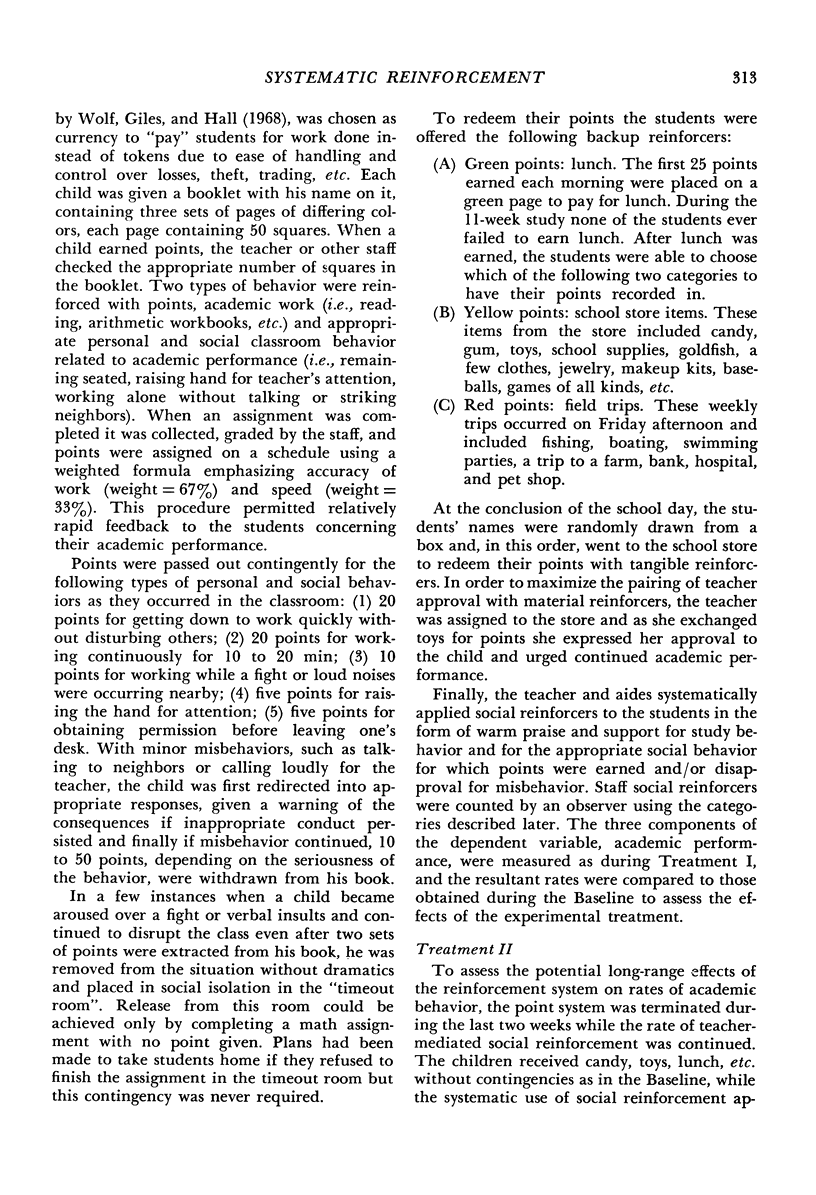
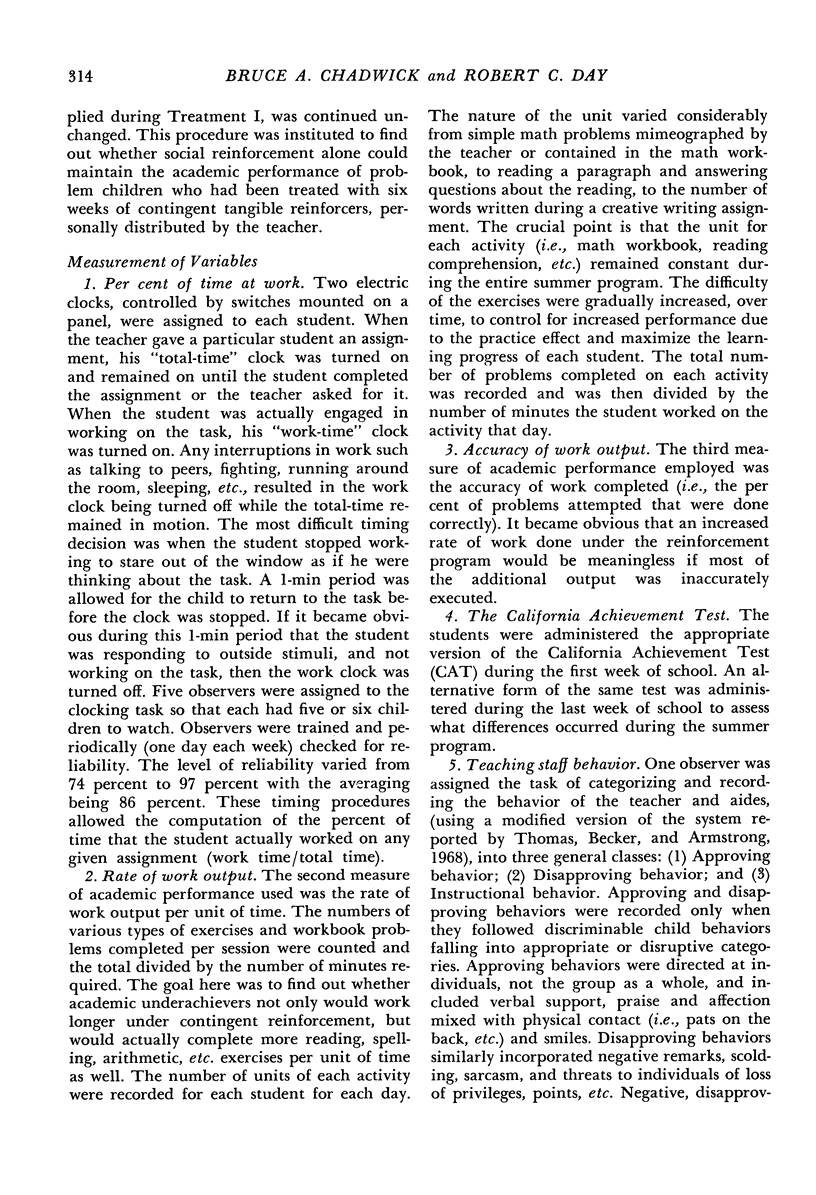
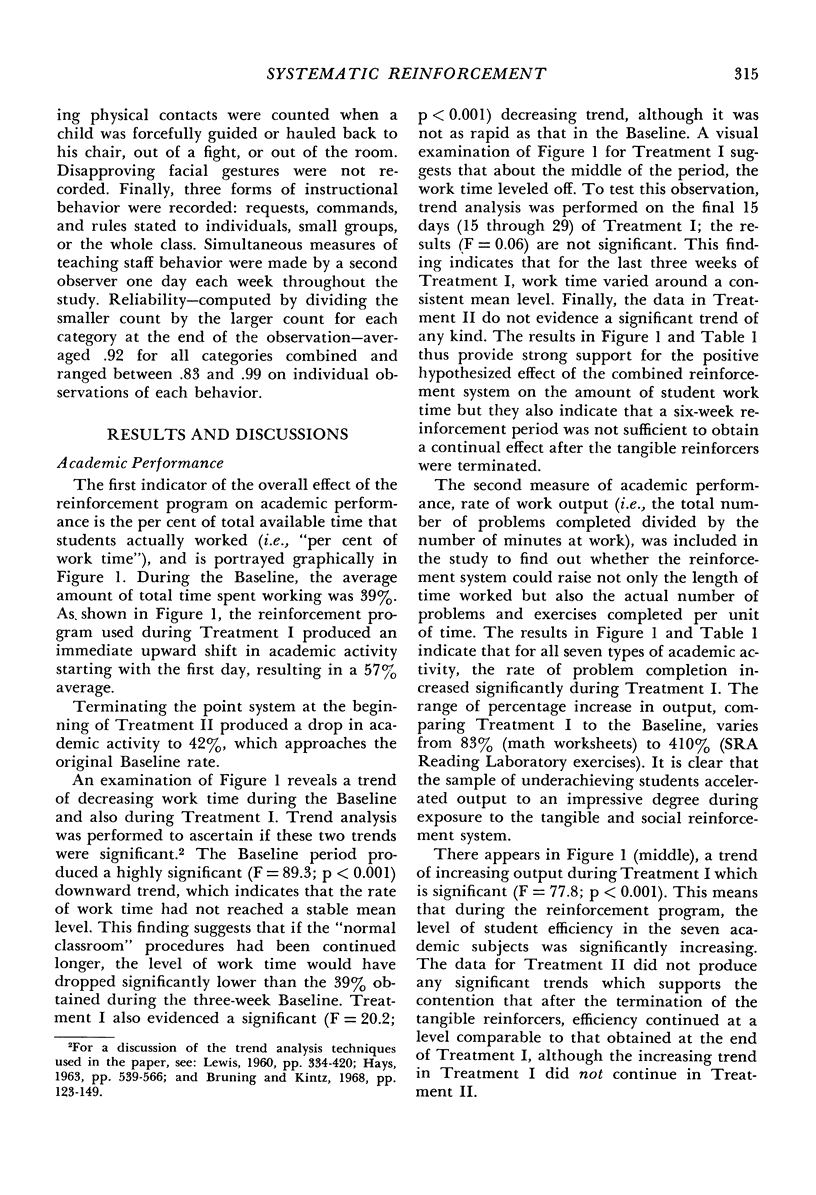
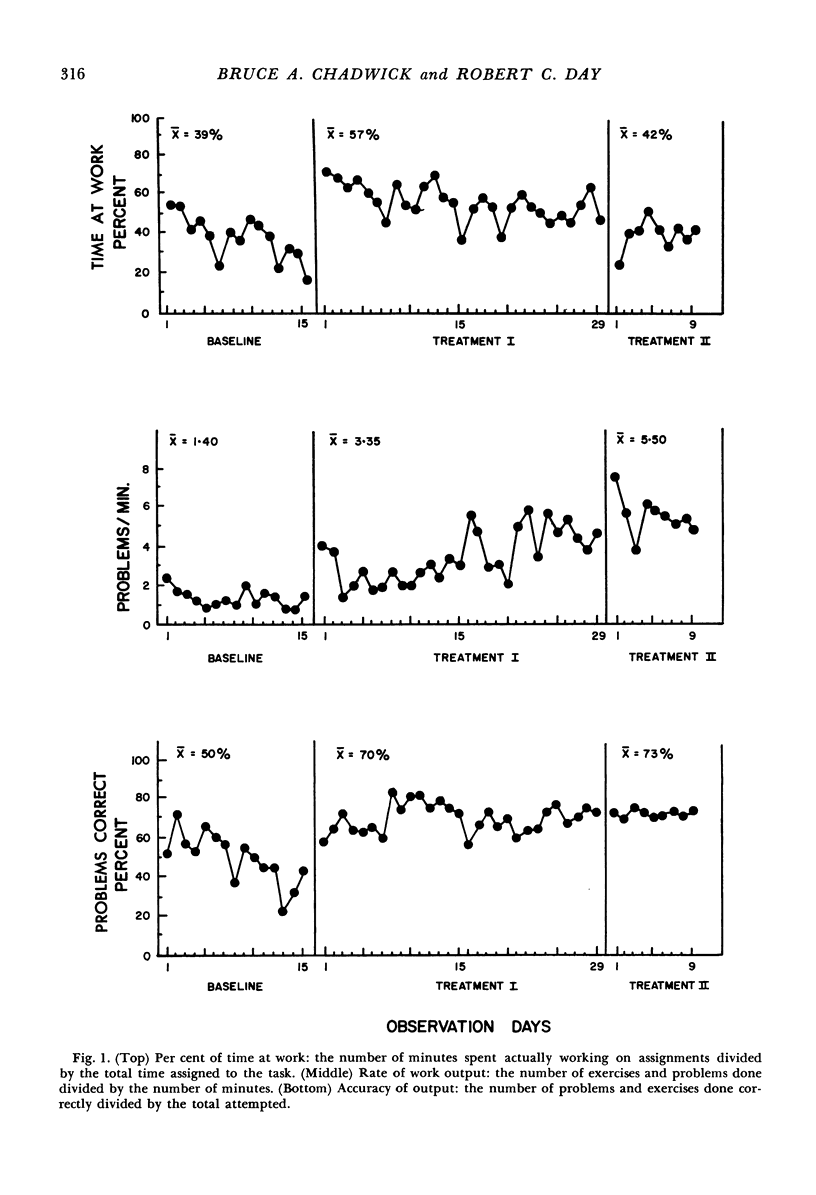
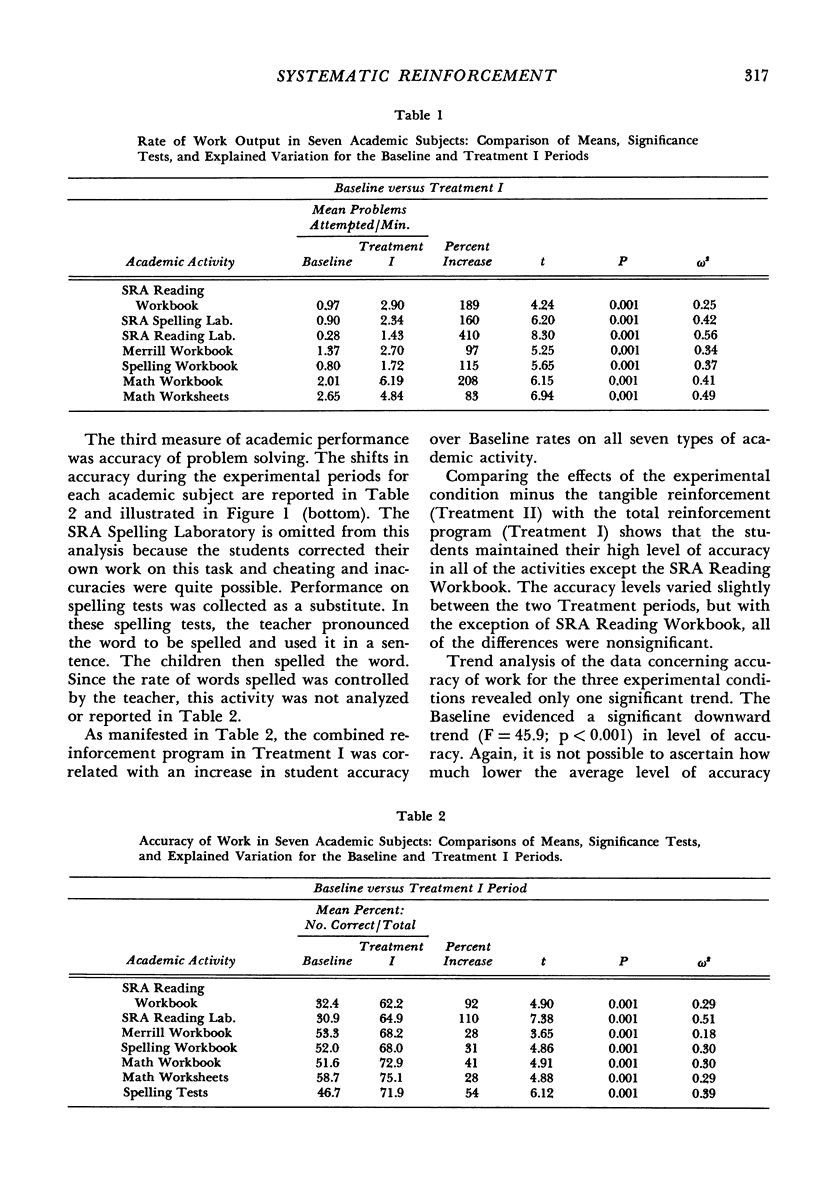
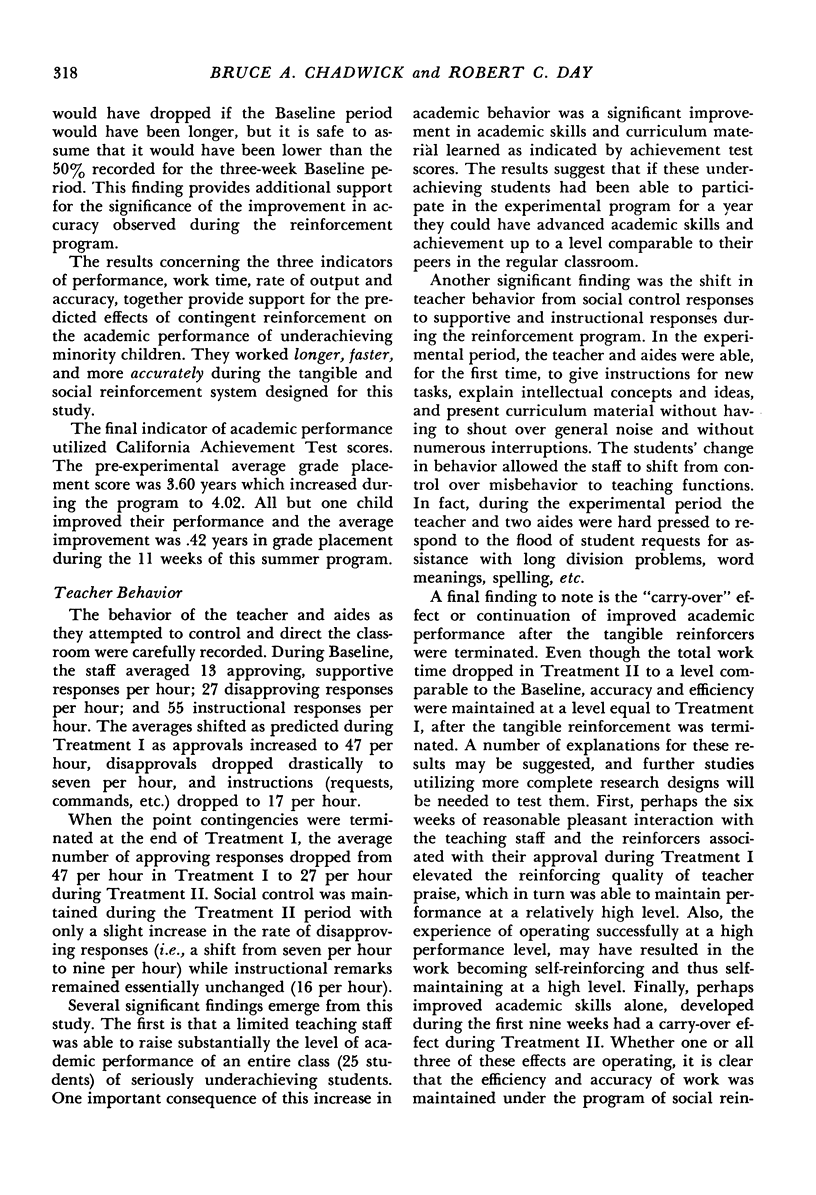
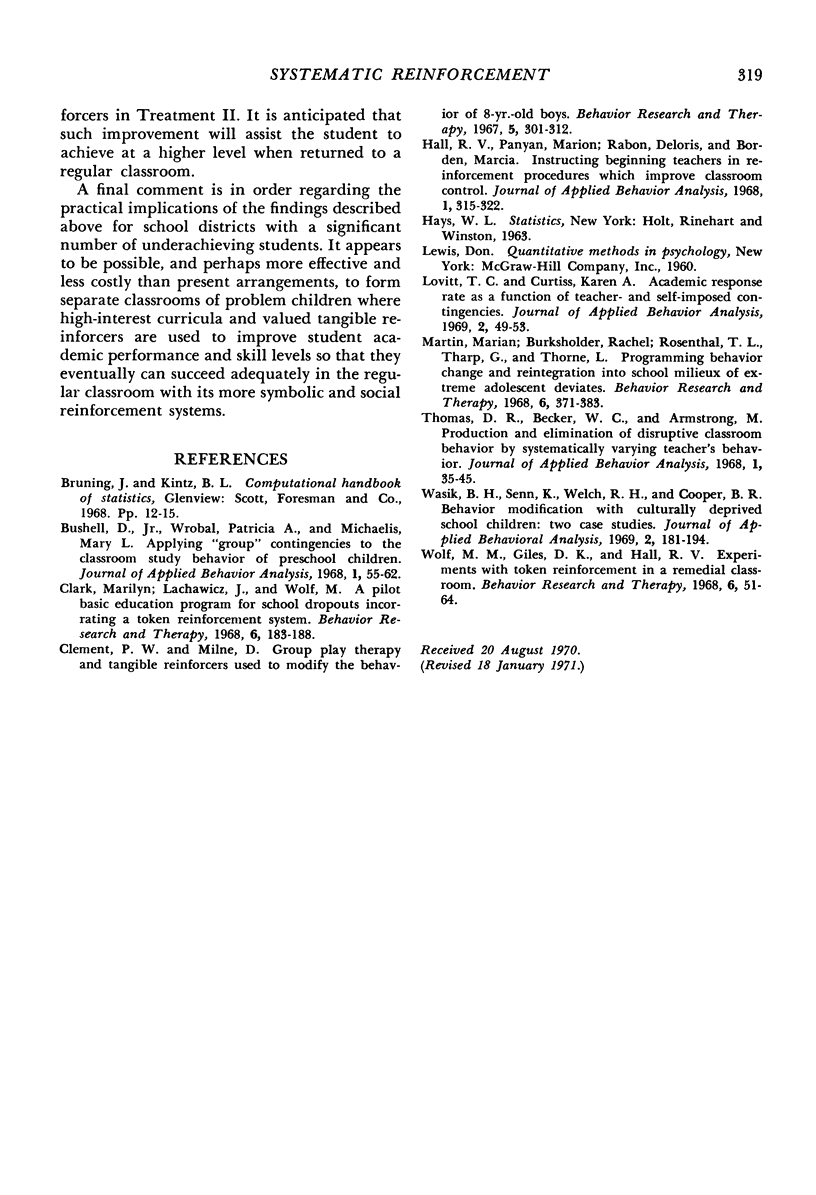
Selected References
These references are in PubMed. This may not be the complete list of references from this article.
- Bushell D., Wrobel P. A., Michaelis M. L. Applying "group" contingencies to the classroom study behavior of preschool children. J Appl Behav Anal. 1968 Spring;1(1):55–61. doi: 10.1901/jaba.1968.1-55. [DOI] [PMC free article] [PubMed] [Google Scholar]
- Clark M., Lachowicz J., Wolf M. A pilot basic education program for school dropouts incorporating a token reinforcement system. Behav Res Ther. 1968 May;6(2):183–188. doi: 10.1016/0005-7967(68)90005-3. [DOI] [PubMed] [Google Scholar]
- Hall R. V., Panyan M., Rabon D., Broden M. Instructing beginning teachers in reinforcement procedures which improve classroom control. J Appl Behav Anal. 1968 Winter;1(4):315–322. doi: 10.1901/jaba.1968.1-315. [DOI] [PMC free article] [PubMed] [Google Scholar]
- Lovitt T. C., Curtiss K. A. Academic response rate as a function of teacher- and self-imposed contingencies. J Appl Behav Anal. 1969 Spring;2(1):49–53. doi: 10.1901/jaba.1969.2-49. [DOI] [PMC free article] [PubMed] [Google Scholar]
- Martin M., Burkholder R., Rosenthal T. L., Tharp R. G., Thorne G. L. Programming behavior change and reintegration into school milieux of extreme adolescent deviates. Behav Res Ther. 1968 Aug;6(3):371–383. doi: 10.1016/0005-7967(68)90070-3. [DOI] [PubMed] [Google Scholar]
- Thomas D. R., Becker W. C., Armstrong M. Production and elimination of disruptive classroom behavior by systematically varying teacher's behavior. J Appl Behav Anal. 1968 Spring;1(1):35–45. doi: 10.1901/jaba.1968.1-35. [DOI] [PMC free article] [PubMed] [Google Scholar]
- Wasik B. H., Senn K., Welch R. H., Cooper B. R. Behavior modification with culturally deprived school children: two case studies. J Appl Behav Anal. 1969 Fall;2(3):181–194. doi: 10.1901/jaba.1969.2-181. [DOI] [PMC free article] [PubMed] [Google Scholar]
- Wolf M. M., Giles D. K., Hall R. V. Experiments with token reinforcement in a remedial classroom. Behav Res Ther. 1968 Feb;6(1):51–64. doi: 10.1016/0005-7967(68)90042-9. [DOI] [PubMed] [Google Scholar]


